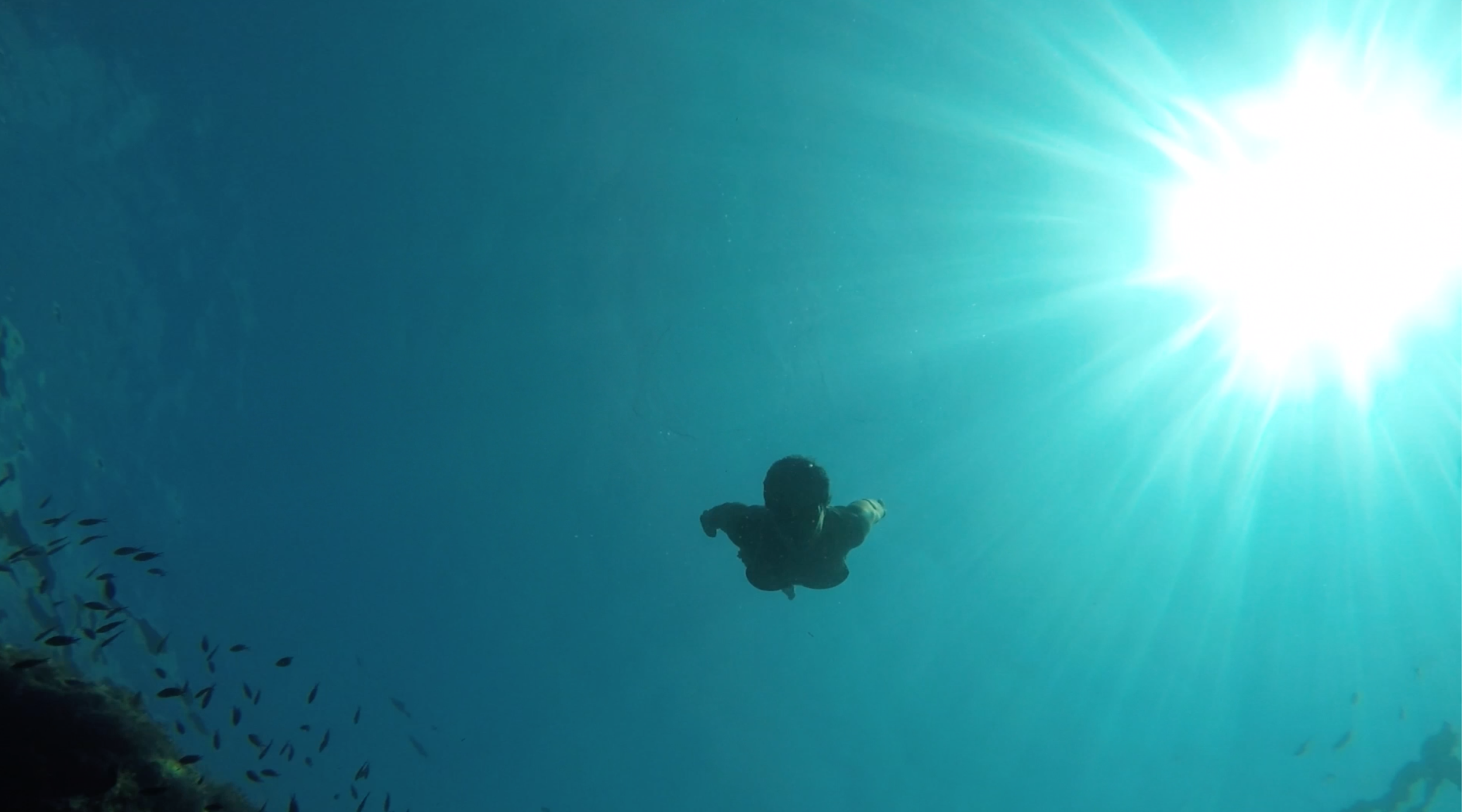
How hektometer goggles work
The principle is quite simple:
As you descend, the silicone membrane inside the goggles moves towards your eyes, reducing the volume and keeping the air pressure even. Simultaneously, water flows through a small hole into the space between frame and membrane.
On return to the surface, the mechanism inverts and the water flows out again.
Freediving mask and hektometer goggles
Comparison of required air volume
Required air volume - 80m dive
On an 80 meters dive with a low volume mask you need to take 1170 ccm of air at the surface (130 ccm in the mask + 1040 ccm in your lungs) just for equalizing the mask. This air has to be transferred entirely to the mask and will be compressed at depth (= 9 ATM) to 130 ccm. With Hektometer goggles instead you start with 32 ccm, that will be reduced to 3,6 ccm at 80 m.
You can use all the air in your lungs for a longer and/or deeper dive.
Required air volume - 30m dive
Even on a 30 meters dive with a low volume mask you need to take 520 ccm of air at the surface (130 ccm in the mask + 390 ccm in your lungs) just for equalizing the mask. This air has to be transferred entirely to the mask and will be compressed at depth (= 4 ATM) to 130 ccm. With Hektometer goggles instead you start with 32 ccm, that will be reduced to 8 ccm at 30 m. Again, you can use all the air in your lungs for a longer and/or deeper dive

